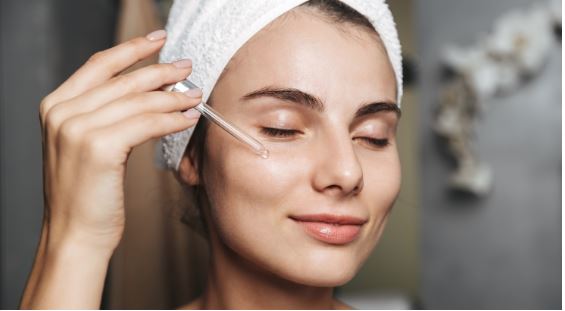10 Essential Skincare Tips for Oily Skin
Dealing with oily skin can feel like a full-time job, but don’t fret—we’ve got 30 straightforward skincare tips to keep that shine in check! From the right cleansers to perfecting your moisturizer game, these practical strategies will help you achieve a fresh and balanced complexion. Let’s get right into it!
The Role of Clay Masks

Clay masks are a fantastic choice for those with oily skin. They help absorb excess oil and unclog pores, making your skin feel fresh and clean. The image shows a person enjoying a clay mask treatment, which is a relaxing way to care for your skin.
Using a clay mask can reduce shine and give a more balanced complexion. They often contain natural ingredients that are gentle on the skin. Plus, the soothing application feels great after a long day.
Incorporating clay masks into your skincare routine can lead to noticeable improvements. Regular use can help prevent breakouts and keep your skin looking its best. Just remember to follow up with a good moisturizer afterward, as clay masks can sometimes leave skin feeling a bit dry.
Choosing the Right Moisturizer

When it comes to managing oily skin, picking the right moisturizer is key. The image shows an array of skincare products on a clean, bright surface, each designed to cater to different skincare needs. Notice how these products come in various forms like gels, creams, and lotions. This diversity reflects the importance of finding what works best for your skin type.
Moisturizers for oily skin should be lightweight and non-comedogenic. Look for gel-based options, which absorb quickly and won’t clog pores. The products in the image seem to focus on hydration without the extra oils, making them ideal for anyone looking to balance their skin.
Pay attention to ingredients like hyaluronic acid and glycerin. These can help provide moisture without making your skin feel greasy. The sleek packaging of these products suggests they are formulated for modern skincare routines, emphasizing freshness and efficacy.
Lastly, don’t forget to test a small amount first. Everyone’s skin reacts differently, so it’s smart to find out what feels right for you. The right moisturizer can make a world of difference in maintaining healthy, clear skin.
Understanding Oily Skin Types
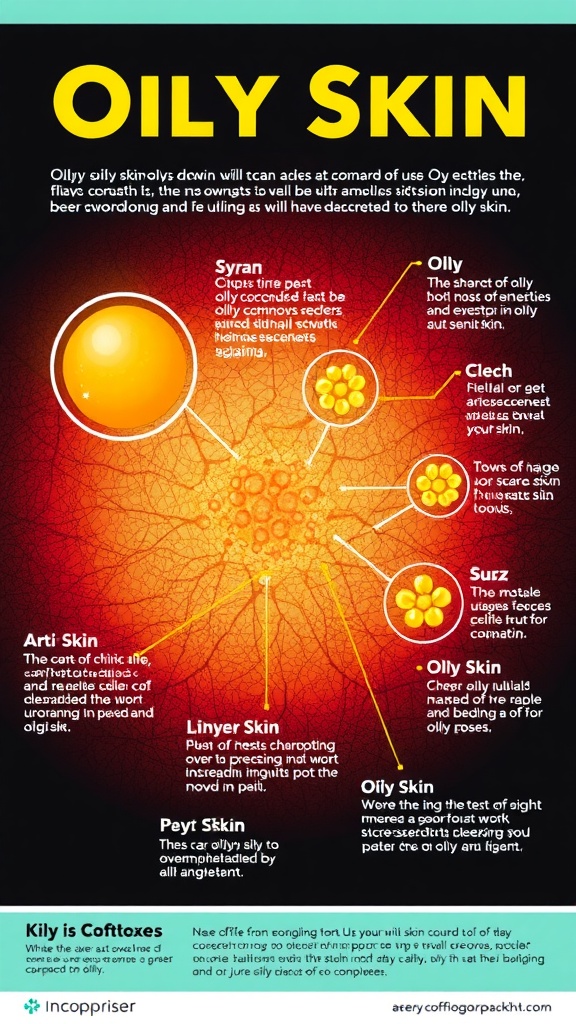
Oily skin can often feel like a double-edged sword. On one hand, it gives you that youthful glow, but on the other, it can lead to shine and breakouts. The image shows different characteristics of oily skin. It’s colorful and helps break down the details nicely.
In the center, you’ll notice the term ‘Oily Skin’ highlighted. This is a skin type where excess sebum is produced, causing that shiny look. The other descriptions around it, like ‘Syran’ and ‘Arti Skin’, indicate various skin concerns related to oiliness. Understanding these terms can help you identify your skin type better.
Everyone’s skin is unique, and knowing if you have oily skin can help you choose the right products and skincare routine. This knowledge can make your skincare journey smoother. Remember, finding the right balance is key to managing oily skin effectively!
Sun Protection for Oily Skin
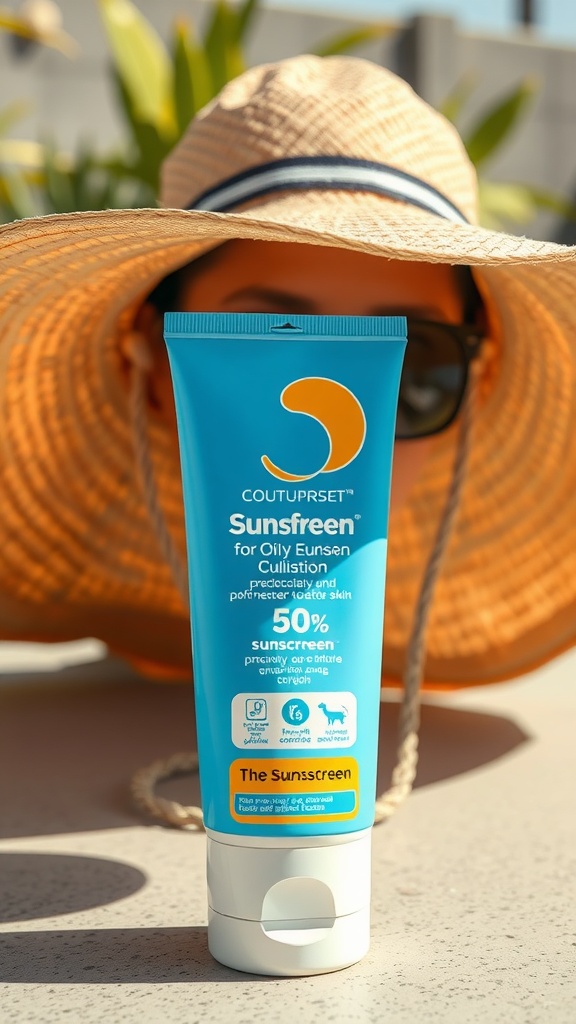
When it comes to skincare for oily skin, sun protection is a must. The right sunscreen can help keep your skin safe while also preventing excess oiliness. In the image, we see a sunscreen specifically designed for oily skin, indicated by its special labeling. Using products tailored for your skin type can make all the difference.
Look for lightweight formulas that don’t clog pores. This sunscreen in the picture boasts a 50% sun protection factor, which is great for shielding your skin from harmful UV rays. It’s important to choose a sunscreen that feels comfortable and won’t contribute to oiliness.
Wearing a wide-brimmed hat, like the one shown, offers additional protection. It creates shade and can help keep your face cooler. Sunscreens with labels like ‘oil-free’ or ‘matte finish’ are usually better for oily skin types. Make sure to reapply throughout the day, especially if you’re outdoors.
Effective Use of Toners
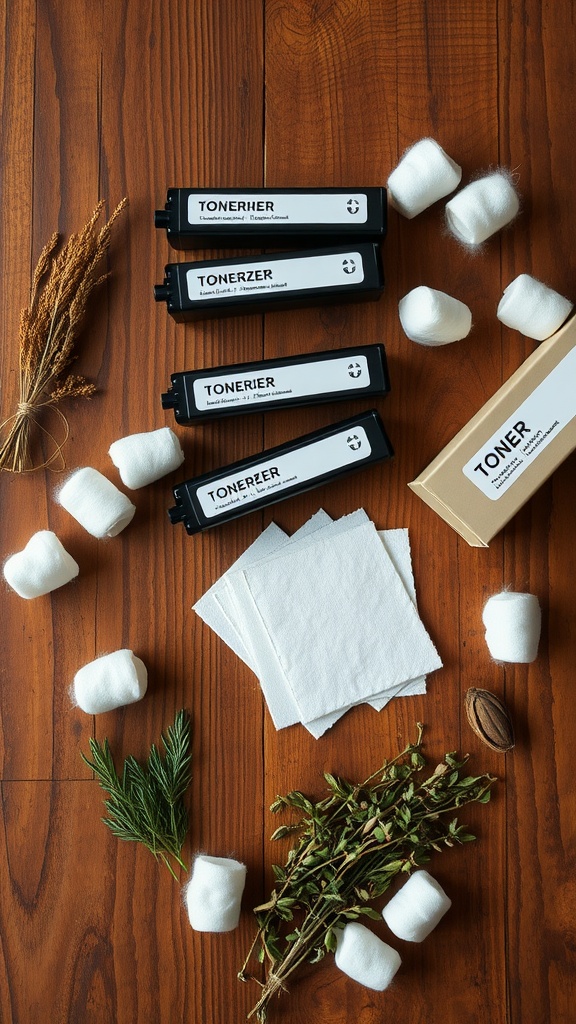
Toners can be a fantastic addition to your skincare routine, especially if you have oily skin. The image shows various toner bottles alongside cotton pads and natural ingredients like herbs. These elements highlight the importance of using the right products to achieve clear skin.
Using a toner helps remove excess oil and any leftover makeup after cleansing. It prepares your skin for moisturizers or treatments that follow. In the picture, you can see different toner options, each designed to target specific skin concerns. Choosing the right toner can make a real difference in your skincare game.
Cotton pads are essential for applying toner effectively. They help distribute the product evenly across your skin. The natural ingredients in the image suggest that some toners might include herbal extracts, which can soothe and balance oily skin. Look for toners with ingredients like witch hazel or tea tree oil to combat shine and breakouts.
To use toner, simply soak a cotton pad and swipe it over your face. Be gentle, focusing on areas that tend to be oilier. This step not only refreshes your skin but also helps tighten pores. Incorporating toners into your daily routine can lead to healthier, more balanced skin.
Exfoliation Techniques for Oily Skin

Exfoliation is key for anyone with oily skin. It helps remove dead skin cells and unclog pores, preventing breakouts and excess oiliness. The image shows a neat setup with exfoliation products, including a pump bottle and creamy paste, ready for use.
The orange bottle likely contains an exfoliating cleanser, which can be a great choice for oily skin. These cleansers often have ingredients like salicylic acid that target excess oil. The white creamy product beside it could be a mask or another type of exfoliant.
Setting the scene on a clean towel highlights the importance of keeping everything tidy while you pamper your skin. Using a clean towel helps avoid reintroducing dirt and oil to your face.
For effective exfoliation, consider using a gentle scrub or a chemical exfoliant a couple of times a week. Don’t overdo it, though, as too much exfoliation can irritate your skin. Focus on areas that tend to get oily, like the T-zone, and you’ll notice a fresher, healthier complexion.
Dealing with Breakouts
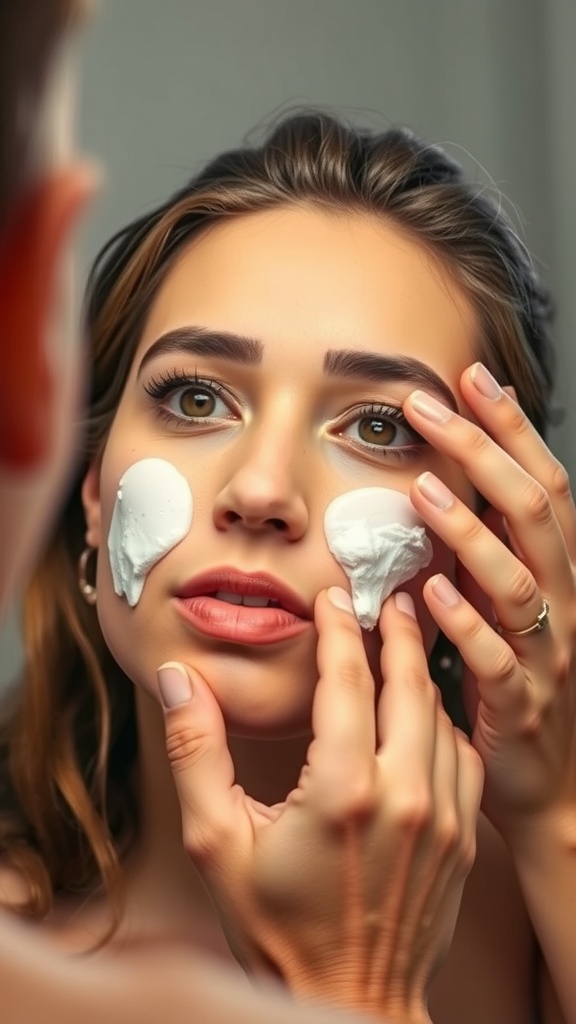
Dealing with breakouts can be frustrating, especially if you have oily skin. This image captures a moment of skincare routine, showing a person applying a treatment to their face. The hands gently applying the product indicate care and attention, which is essential for managing breakouts.
Oily skin often leads to clogged pores, which can contribute to those pesky pimples. It’s important to find a routine that works well for your skin type. Using lightweight, non-comedogenic products can help keep your skin clear.
Regular exfoliation is key. It removes dead skin cells and prevents pores from clogging. Look for gentle exfoliators that won’t irritate your skin. Pair this with a good moisturizer to maintain balance in your skin. Hydration is still necessary, even if your skin is oily.
Don’t forget the importance of a consistent cleansing routine. Wash your face at least twice a day with a cleanser designed for oily skin. This helps remove excess oil and impurities, reducing the chances of breakouts.
Daily Cleansing Routines

When it comes to caring for oily skin, a solid daily cleansing routine is key. The image shows a bright and inviting bathroom counter, filled with various skincare products. Each item plays a role in maintaining clear and fresh skin.
The cleansing foams and creams beside the sleek face brushes highlight the importance of not just washing your face, but doing it effectively. Oily skin can trap dirt and excess sebum, so using the right tools and products can help keep pores clear.
For daily cleansing, try to incorporate a gentle cleanser tailored for oily skin. This helps remove excess oil without stripping your skin of its natural moisture. The brushes shown can assist in providing a deeper clean, making them a great addition to your routine.
Don’t forget to cleanse twice daily. Morning routines should prep your skin for the day, while evening routines help remove makeup and impurities that accumulate. With the right products, you can create a refreshing daily cleansing routine that keeps your skin looking its best!
Dietary Tips for Clearer Skin
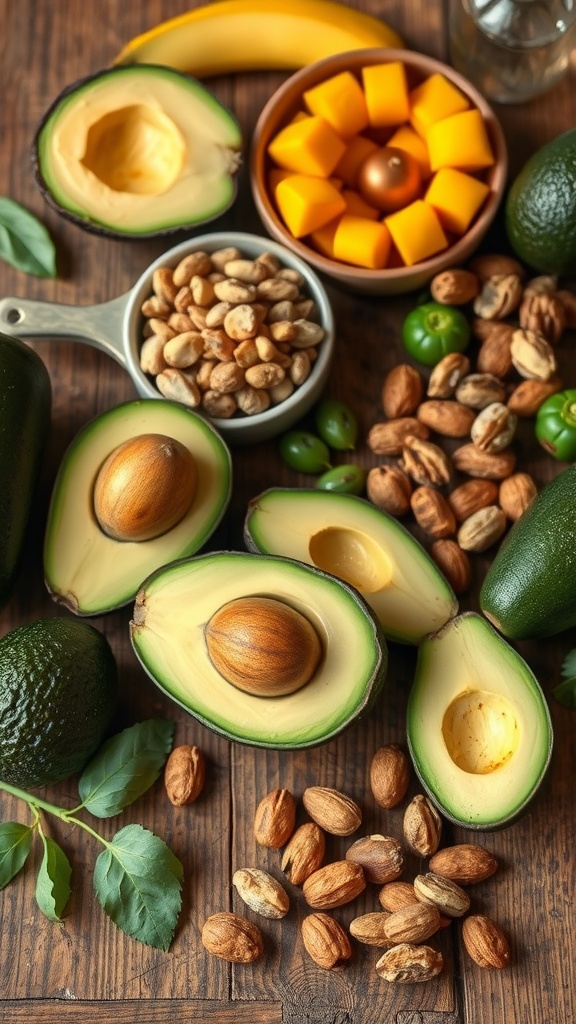
Your diet plays a big role in how your skin looks and feels. If you have oily skin, certain foods might help keep it clear and healthy. The image shows a colorful assortment of fresh ingredients that can make a difference in your skincare routine.
Avocados are packed with healthy fats and vitamins. They help nourish your skin and keep it hydrated. Eating avocados can help reduce excess oil and give your skin a nice glow. Pair them with some nuts, which are rich in vitamin E. This vitamin is known for its skin-protecting properties.
Fruits like bananas and mangoes add sweetness and vitamins to your meals. Bananas contain potassium, which helps with hydration, while mangoes are full of antioxidants. Including these fruits in your diet can promote clearer skin.
When snacking, choose a mix of nuts and seeds. They provide healthy fats without causing breakouts. Almonds, walnuts, and pumpkin seeds are all great choices. They not only taste good but also support skin health.
Make sure to drink plenty of water too. Staying hydrated can help keep your skin balanced and reduce oiliness. A good diet, combined with hydration, can lead to a brighter, clearer complexion.
Lifestyle Changes for Better Skin

Making small shifts in your daily routine can lead to clearer, healthier skin, especially for those battling oiliness. The image captures a woman enjoying a moment of hydration in a serene outdoor space. She’s sipping from a water bottle, emphasizing the importance of staying hydrated. Drinking enough water helps flush out toxins, which can minimize breakouts.
Along with hydration, incorporating some physical activity can make a difference. Exercise increases blood flow, delivering oxygen and nutrients to your skin. The bright, sunny environment in the image encourages an active lifestyle, whether it’s yoga, walking, or any other enjoyable activity.
Another key point is maintaining a balanced diet. Incorporating fruits, vegetables, and healthy fats can support skin health from the inside out. Foods rich in antioxidants fight free radicals, reducing skin issues.
Lastly, don’t underestimate the power of rest. Quality sleep is essential for your skin’s repair process. Establishing a good sleep routine can help reduce stress and improve skin clarity.

